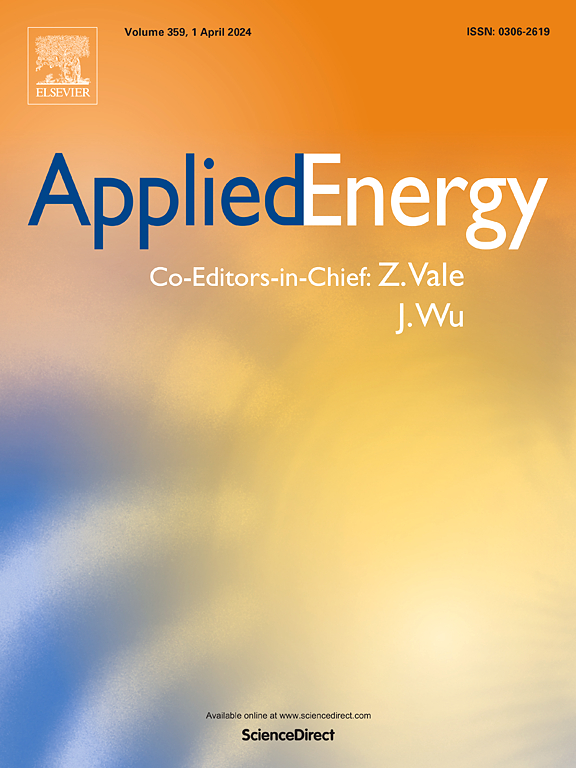Hybrid multi-agent deep reinforcement learning for multi-type mobile resources dispatching under transportation and power network recovery
IF 10.1
1区 工程技术
Q1 ENERGY & FUELS
引用次数: 0
Abstract
Rainstorm waterlogging or typhoon can not only cause seriously failure of power network (PN), but also damage the normal traffic of transportation network (TN). Equipment fault of PN affects normal power supply of critical loads, and the interruption of TN severely limits the flexible transfer of mobile resources for recovery of transportation and power network (TPN). Previous work only addresses dispatching of multi-type mobile resources (MMRs) for power network recovery on the assumption of healthy TN, which makes dispatching strategy impractical. To fill this gap, this paper proposes a dispatching model of MMRs for collaborative recovery of TPN, embedding road repair crews (RRCs) dispatching behaviors into road repair constraints. To solve the above model, firstly road island and various topology update strategies are introduced to simplify shortest path searching for MMRs routing. Then, the dispatching model of MMRs is described as a parameterized action Markov decision process, in which MMRs are modeled as different types of intelligent agents considering various discrete-continuous dispatching characteristics. And, a hybrid multi-agent deep reinforcement learning (HMADRL) method characterizing master-slave architecture is developed to improve the solving efficiency and convergence speed of model, where the master module describes the recovery process of TN with dispatching of RRCs, and the slave module is constructed to recovery PN based on the path update strategies. The case analysis based on 15-node PN (18-node TN), 33-node PN (45-node TN) and practical example demonstrates that this approach can elevate the practicality of dispatching strategies and the recovery efficiency of TPN.
交通与电网恢复条件下多类型移动资源调度的混合多智能体深度强化学习
暴雨内涝或台风不仅会造成电网的严重故障,还会破坏交通运输网的正常交通。TN设备故障影响关键负荷的正常供电,TN中断严重限制了TPN (transport and power network)恢复中移动资源的灵活转移。以往的研究仅在健康TN的假设下,对电网恢复时的多类型移动资源调度进行了研究,使得调度策略不现实。为了填补这一空白,本文提出了一种mmr协同恢复TPN的调度模型,将道路维修人员的调度行为嵌入到道路维修约束中。针对上述模型,首先引入了道路孤岛和各种拓扑更新策略,简化了MMRs路由的最短路径搜索;然后,将mmr调度模型描述为一个参数化的动作马尔可夫决策过程,将mmr建模为考虑各种离散连续调度特征的不同类型的智能体。为了提高模型的求解效率和收敛速度,提出了一种主从结构的混合多智能体深度强化学习(HMADRL)方法,其中主模块通过rrc的调度描述TN的恢复过程,从模块基于路径更新策略构建恢复PN的模块。基于15节点PN(18节点TN)和33节点PN(45节点TN)的实例分析和实例分析表明,该方法可以提高调度策略的实用性和TPN的恢复效率。
本文章由计算机程序翻译,如有差异,请以英文原文为准。
求助全文
约1分钟内获得全文
求助全文
来源期刊

Applied Energy
工程技术-工程:化工
CiteScore
21.20
自引率
10.70%
发文量
1830
审稿时长
41 days
期刊介绍:
Applied Energy serves as a platform for sharing innovations, research, development, and demonstrations in energy conversion, conservation, and sustainable energy systems. The journal covers topics such as optimal energy resource use, environmental pollutant mitigation, and energy process analysis. It welcomes original papers, review articles, technical notes, and letters to the editor. Authors are encouraged to submit manuscripts that bridge the gap between research, development, and implementation. The journal addresses a wide spectrum of topics, including fossil and renewable energy technologies, energy economics, and environmental impacts. Applied Energy also explores modeling and forecasting, conservation strategies, and the social and economic implications of energy policies, including climate change mitigation. It is complemented by the open-access journal Advances in Applied Energy.
 求助内容:
求助内容: 应助结果提醒方式:
应助结果提醒方式:


